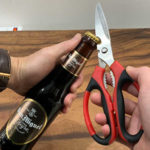Bottle-tossing performances, fire juggling, and alcohol-handling displays are just a few of the impressive tricks up a bartender’s sleeve. These skilled individuals work their magic behind the bar, in clubs, and at restaurants, crafting delicious cocktails and other alcoholic beverages. But what tools do they use to create these mouth-watering drinks? Let’s explore the essential equipment every bartender needs to know about.
1 Shaker

The shaker is an indispensable tool for any bartender, helping them mix and chill cocktails, spirits, and other drinks to perfection. It’s also an essential prop for those show-stopping flair bartending routines.
Invented in the 1870s and patented in the 1880s, the shaker reached its heyday during the Jazz Age of the 1920s and 1930s, becoming a symbol of sophistication and refinement. However, its popularity waned during World War II as shaker manufacturers turned their efforts to producing weapons. It made a comeback in the 1950s and has been a staple in the bartending world ever since.
There are three main types of shakers:
Boston Shaker

The Boston Shaker consists of two parts: a stainless steel base and a glass mixing cup called a mixing glass. It’s perfect for mixing large-volume drinks and comes with volume markings for accuracy. While it’s easy to disassemble, the glass cup is fragile and prone to leaks, and it doesn’t have a built-in strainer, requiring an additional strainer for use.
There’s also a variation called the “tin-on-tin” Boston Shaker, where both halves are made of stainless steel. This version excels at maintaining temperature, whether hot or cold, and is more durable and leak-resistant.
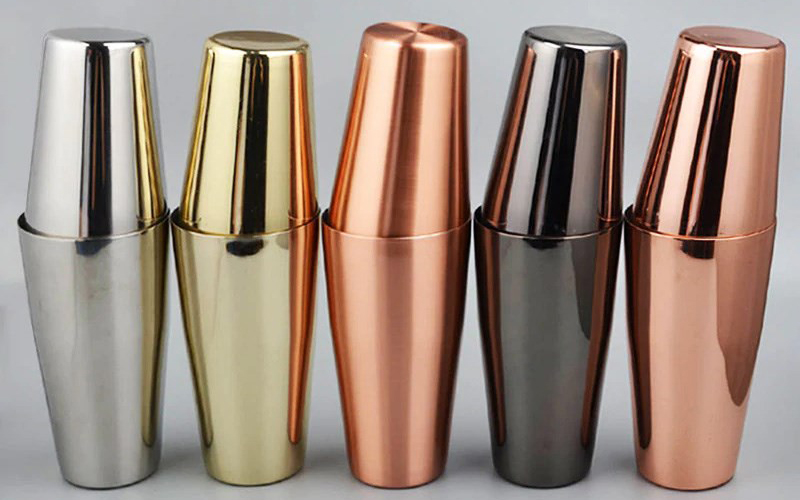
Cobbler Shaker (Standard Shaker)
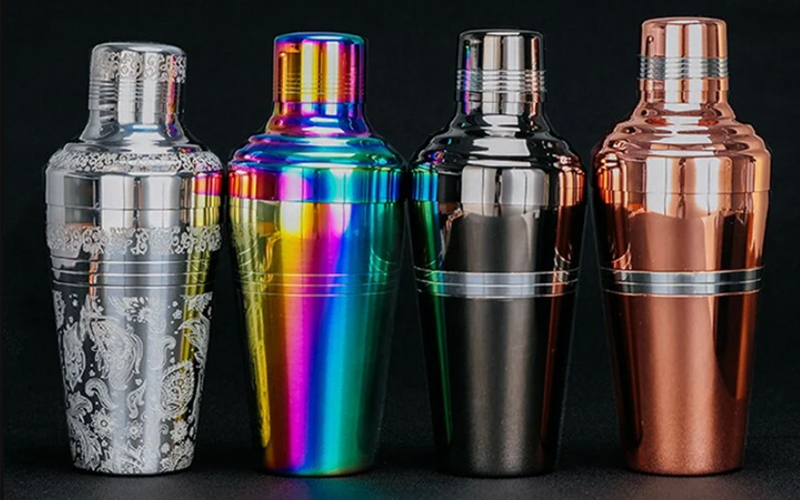
The Cobbler Shaker is a three-piece shaker with a built-in strainer and a cap, all made of stainless steel. Its secure closure and ambidextrous design make it a favorite among bartenders, as it can be operated with either hand. It comes in three sizes: under 0.5L, 0.5L – 1L, and 1L – 1.5L. However, one drawback is that the metal cap can get stuck due to temperature changes, making it difficult to open.
Parisian Shaker
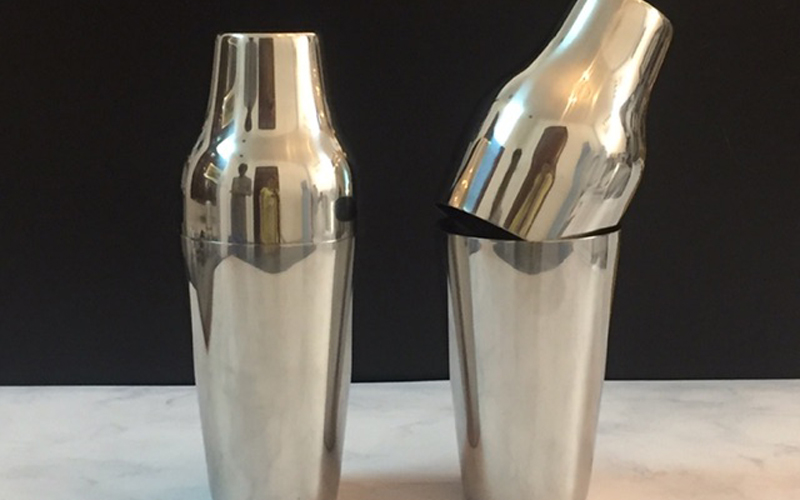
The Parisian Shaker combines the best of both worlds, featuring the two-part design of the Boston Shaker and the all-metal construction of the Cobbler Shaker, without a built-in strainer. It has a sleek and compact design but can be a bit tricky to separate the two halves.
2 Bar Spoon
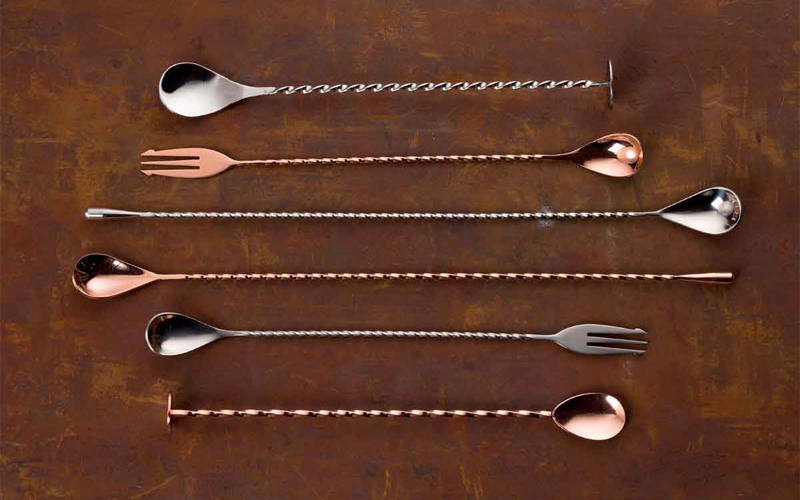
A good bar spoon is essential for stirring and mixing ingredients. Made from stainless steel or hard plastic, it typically has a long, straight or spiral handle for easy maneuvering in tall glasses. One end features a spoon for stirring, while the other end may have a fork or a sharp point for picking garnishes or opening plastic bottle caps.
Here are some common types of bar spoons:

American-Style Bar Spoon
This type of spoon has a spiral handle for a comfortable grip and a small rubber cap on the end.
Japanese-Style Bar Spoon
Elegant and long (up to 40cm), the Japanese-style bar spoon features a spiral handle and is perfect for taller glasses.
European-Style Bar Spoon
Similar to the Japanese style, but with a round base that allows the spoon to stand upright when not in use.
3 Strainer
Strainers are used to separate solid ingredients like ice, herbs, and fruit bits from the liquid after mixing. Here are some of the most common types:
Hawthorne Strainer
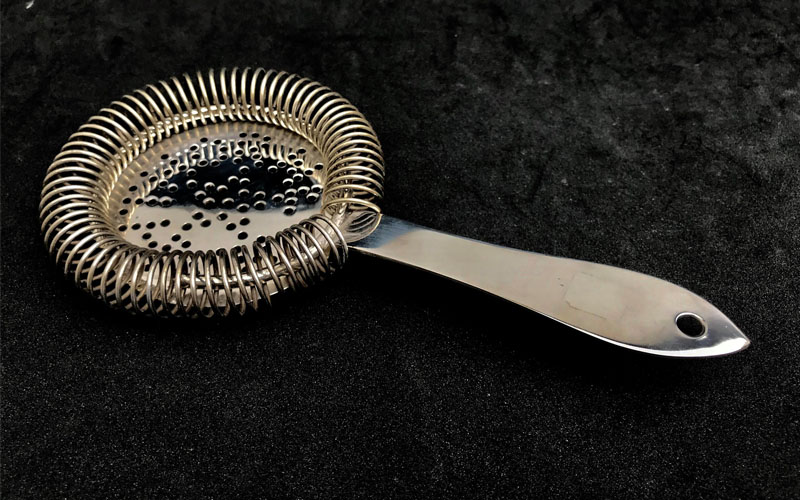
The Hawthorne strainer is the most popular choice among both amateur and professional bartenders. It consists of a flat, perforated metal disk with a coil spring around the rim, making it easy to attach and remove from the shaker.
Julep Strainer

The Julep strainer has a shell-like design with small perforations and a long, durable handle. It’s commonly used with the Boston Shaker, but it can be slow for straining larger ingredients.
Fine Strainer
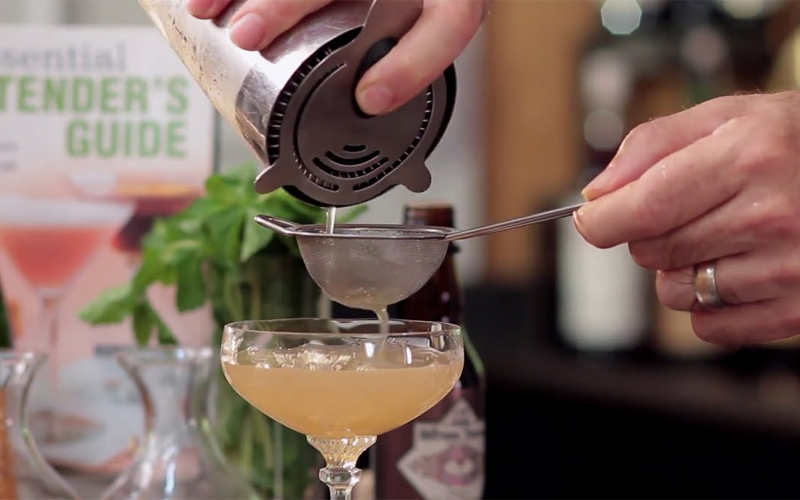
The fine strainer is often used as a secondary strainer to ensure a smooth, consistent drink. It has a fine mesh that effectively removes small ice chips and fruit pieces. It’s affordable and readily available in most markets and supermarkets.
4 Jigger
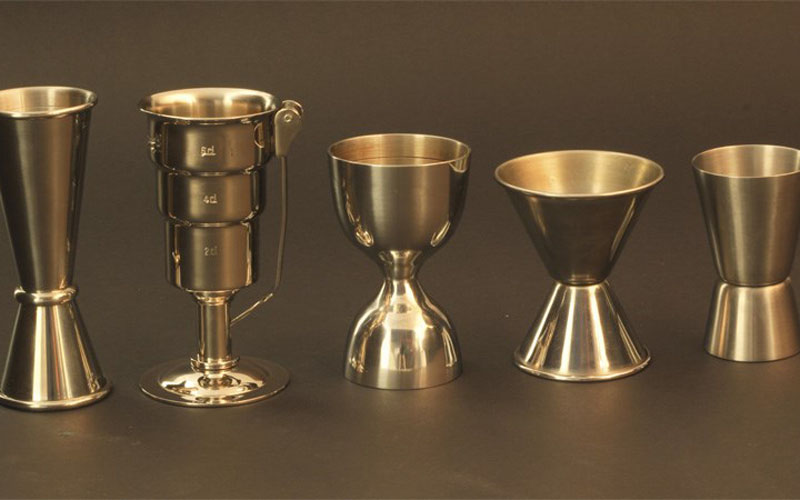
Just like a baker needs measuring cups, a bartender relies on a jigger to ensure the perfect balance of flavors in their drinks. Jiggers come in various styles and price points, and here are some of the most common types:
Classic Double Jigger (Standard Jigger)
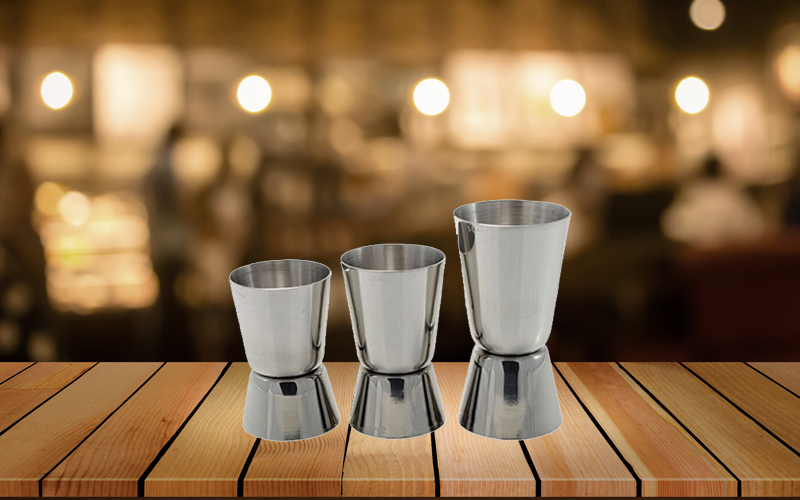
This is the most common type of jigger, featuring an asymmetrical hourglass design. It typically comes in volumes ranging from 0.5oz to 1.5oz, with larger sizes going up to 2oz. However, the larger sizes are more prone to tipping over.
Bell Jigger
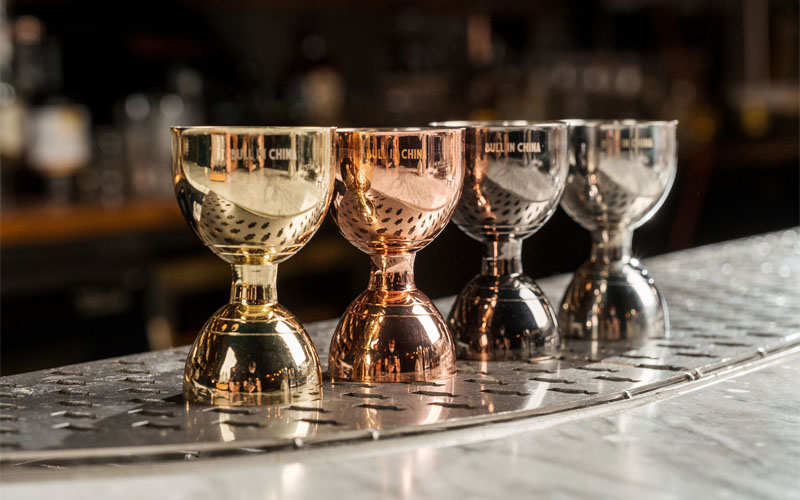
The bell jigger is a double jigger with differently sized bell-shaped ends. Its wide, heavy base makes it more stable than the standard double jigger.
Single Jigger
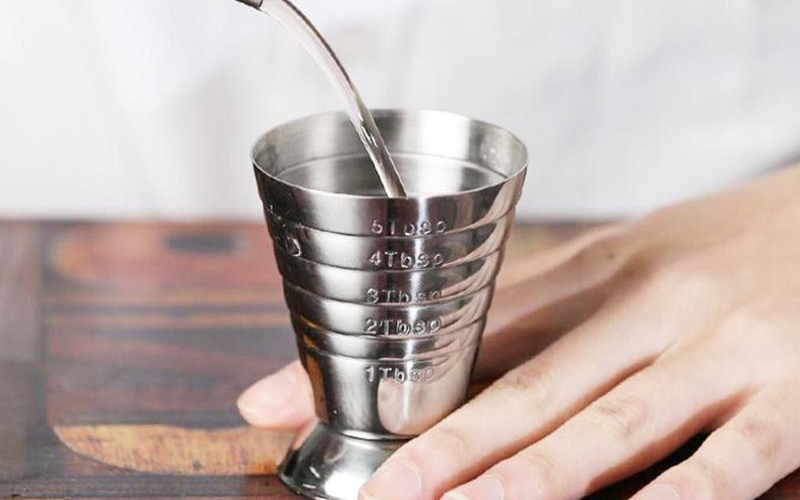
The single jigger resembles a small glass or cup, often made of glass or metal and marked with volume measurements. In addition to measuring, it can also double as a drinking vessel.
Japanese Jigger
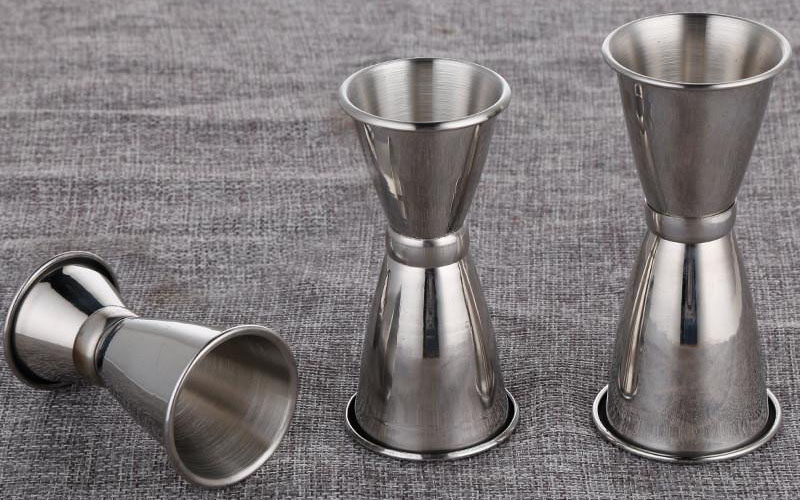
The Japanese jigger is similar to the classic style but more compact and elegant. It’s a popular choice as it’s less likely to tip over and easier to pour into glasses.
5 Corkscrew
As alcohol is a key ingredient in many cocktails, a reliable corkscrew is essential behind the bar. Here are two common types:
Waiter’s Corkscrew
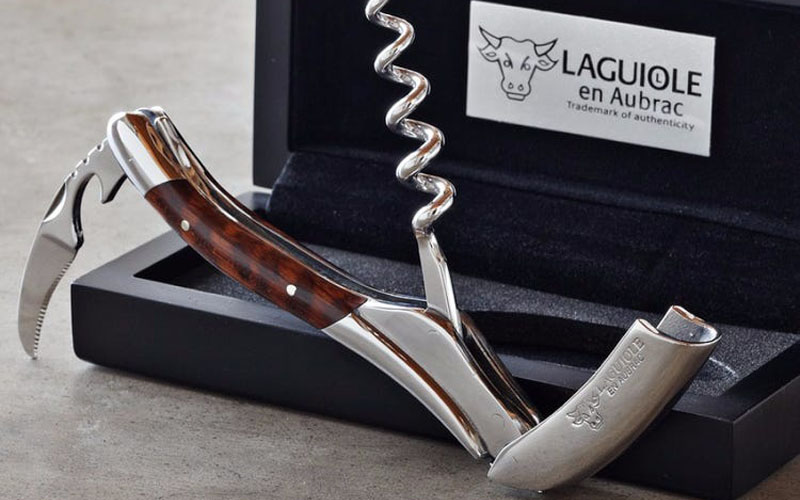
This versatile corkscrew features a double-hinged design that provides leverage for easy cork removal.
Air Pressure Wine Opener

While this type of opener has a limited lifespan of 80-100 uses, it’s incredibly easy to use. Simply insert the hollow needle through the cork, press a button to release CO2 from the built-in cartridge, and watch as the cork pops out effortlessly. Great for seniors or anyone with limited hand strength.
6 Glassware
The right glassware can elevate the presentation of a bartender’s creations. Here are some common types of glasses:
Cordial
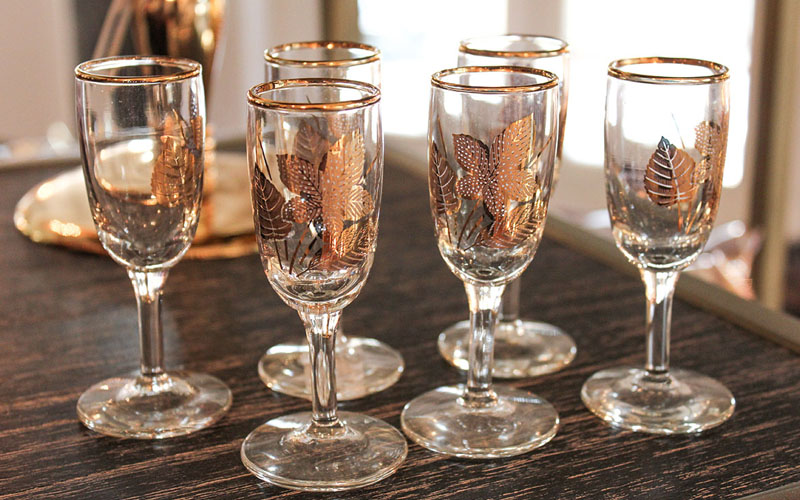
These small glasses typically hold 30-120ml of liquor and are perfect for serving shots or small cocktails.
Highball
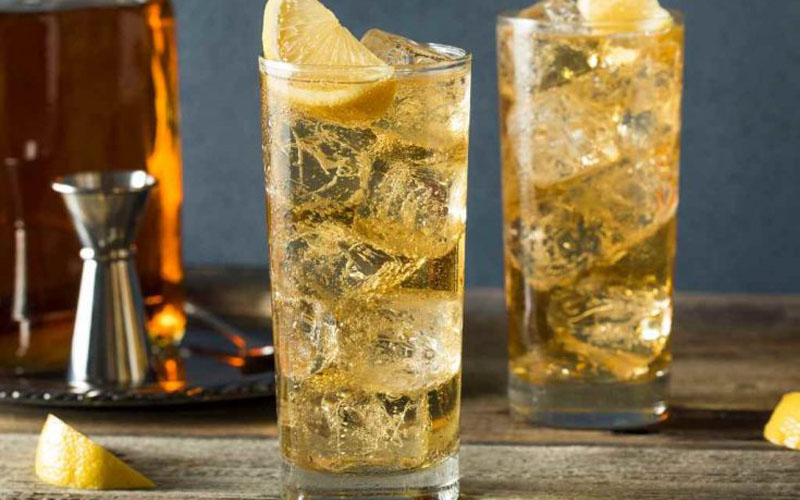
Highball glasses are tall, sturdy, and usually stemless. They’re ideal for serving mixed drinks with lots of ice.
Hurricane

Hurricane glasses are used for serving tropical cocktails like the Hurricane, June Bug, and Blue Hawaii.
Champagne Flute


























